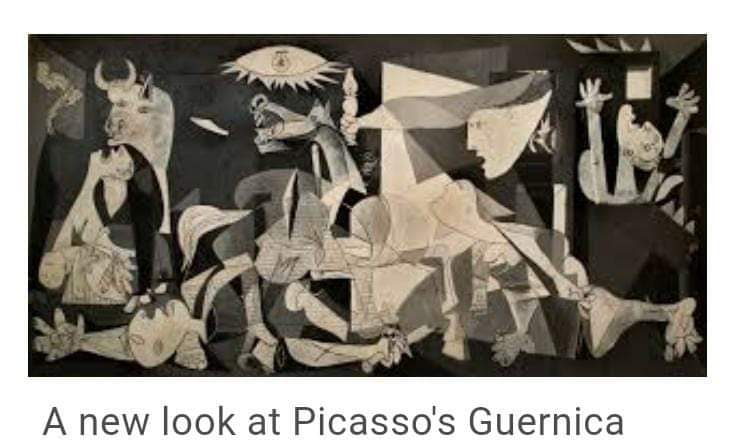13th July,2023
Guernica is a large 1937 oil painting by Spanish artist Pablo Picasso.
It is one of his best-known works, regarded by many art critics as the most moving and powerful anti-war painting in history.
Picasso’s painting is based on the events of April 27, 1937, when Hitler’s powerful German air force, acting in support of Franco, bombed the village of Guernica in northern Spain, a city of no strategic military value. It was history’s first aerial saturation bombing of a civilian population.
During the Nazi occupation of Paris, Pablo Picasso was taken to be “interrogated” by a special branch of Gestapo that had been set up to handle intellectuals and artists.
The officer who confronted Picasso, in spite of being a Gestapo thug, was polite, spoke good French and seemed even educated. A rarity.
The Nazi policeman gestured Picasso to sit in front of his desk, then he produced a photo of the now world famous “Guernica”, the large painting that depicts Picasso’s take on the Nazi bombing of the Spanish town of the same name during the Spanish Civil War.
With that facial expression that at the same time betrays tolerance toward a recognized genius and anger for a misdeed of the same genius, the Nazi pointed at the photo and said with a harsh voice:
“Picasso! Have you done this?”
The reply of Picasso was worthy of a Nobel Prize,
Said he: “No, you did it!
I only painted it”.
Guernica should be seen as Picasso’s comment on what war can do and how art can protect us against overwhelming forces such as political crime, war, and death. These topics are still relevant to us and will continue to be.
Decades after its creation, Guernica still continues to accurately exemplify Picasso’s own resounding words: “A work of art must make a man react… It must agitate him and shake him up.”
Appreciate Art and the message it conveys and stay blessed forever.

